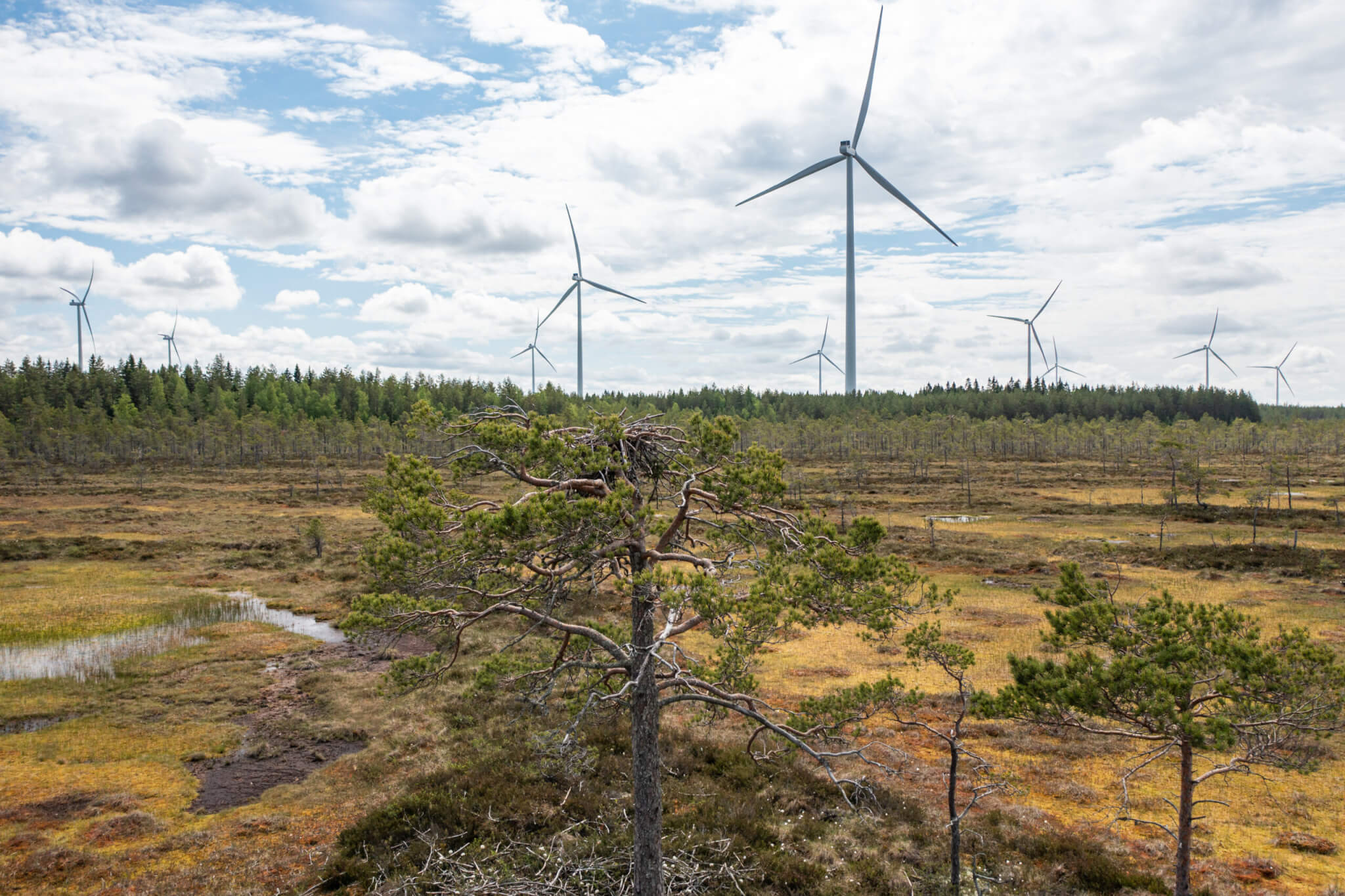As wind power has become more common in Finland, the climate impacts of wind power construction and the effects on the carbon sink of Finnish forests have become a topic of discussion. According to a recent study by Etha Wind, the positive impact of wind power in terms of emission reductions is 50 times greater than its climate negative impact. The forest area required for wind power is not large; it is estimated that the land area needed for 100 terawatt hours (TWh) of wind power generation would be about 0.15 % of Finland’s forest area. Last year, wind power production in Finland was 11.5 TWh.
Wind power is growing steadily and more than a third of Finland’s electricity consumption will be covered by wind power by 2026 at the latest. Wind power generation is expected to grow to at least 28 TWh by 2026. As a fuel-free form of energy production, wind power reduces the carbon footprint of Finnish energy production, but what are the climate impacts of wind power construction itself?
Wind power has a small carbon footprint and a large carbon handprint
Wind power construction has the lowest carbon dioxide emissions in the energy sector (7-9 gCO2 eq/kWh. UBA 2021, Vestas 2021). In comparison, nuclear power has a CO2 emission of 5-6 g CO2 eq/kWh, solar power 15-30 g CO2 eq/kWh, natural gas 400-500 g CO2 eq/kWh and coal 900-1000 g CO2 eq/kWh (UNECE, 2021). A wind turbine also produces the same amount of energy in less than a year as it took to manufacture and build it. Over its entire life cycle, a wind turbine produces more than 60 times the amount of energy required to build it.
In its report, Etha Wind explains the size of the carbon handprint of wind power. The carbon handprint describes how much emissions are saved by one activity or solution compared to another. “One concrete conclusion of the study is that the positive impact of wind power in terms of emission reductions is 50 times greater than its negative impact in terms of emissions over the life cycle of a wind power project and the reduction of the carbon sink,” says Jukka Rönnlund, Team Leader at Etha Wind.
Wind farms are always built to replace another form of energy production, usually fossil-based. According to Etha Wind’s study, the carbon footprint of wind turbines is estimated at 463 gCO2 eq/kWh for a 10-turbine wind farm, depending on which energy source is being replaced. This corresponds to a reduction of 139 000 tonnes of emissions per year, which is equivalent to 13 000 Finns becoming carbon neutral.
Wind power is energy-efficient land use
The energy transition is replacing imported energy with domestic energy production, which will inevitably have a visible impact on the landscape. It is therefore important to make the most efficient use of land. Wind farms are mainly located in areas of commercial forestry and other human activities. Around 2 % of the wind energy area is covered by wind turbines, their service area and roads, with the rest remaining in its original agricultural, forestry or recreational use. Taking into account the construction of new service roads and the widening of old forest roads, a total of about 2-3 hectares per wind turbine will be cleared. This is equivalent to an area the size of about two football pitches.
BIOS researchers Tere Vadén and Antti Majava have studied the land-use efficiency of different forms of energy and one conclusion is that the effects of energy deforestation on the use of forest land are ultimately driven by a very simple fact: burning the carbon stocks produced by co-firing, i.e. wood, is a much less efficient alternative to solar and wind energy in terms of land-use efficiency. Of the industrial forms of energy production, nuclear and wind power are the most energy-efficient in terms of direct land-use impacts.
This is largely due to the moderate size of the land area required for wind power. “It can be calculated that the direct land use impact of 100 TWh of wind power capacity and the transmission links it requires is in the order of 400 square kilometres. Given that Finland’s forestry land area is about 263,000 square kilometres, the land area needed for wind power generation is therefore 0.15 % of the forestry land area”, Majava sums up, and continues, “If 100 TWh of electricity is generated with wood instead of wind power, 140,000 square kilometres of land would already be needed, i.e. more than half of all forestry land”.
If wind power were to replace the use of mainly fossil energy sources, an increase of 100 TWh of wind power capacity would result in a reduction of 10-25 megatonnes of emissions, depending on the calculation method. In other words, the emission reduction would be several tens of times greater than the emission and carbon sink effects of wind power land use.
(Machine translation)
Read more in Finnish:
Carbon hand print calculation for Takakangas-Pihlajaharju project, Etha Wind Oy, 2022.
For more information:
Jukka Rönnlund, Etha Wind Oy
+358 40 577 7568, jukka.ronnlund@ethawind.com
Antti Majava, BIOS research unit
+358 40 065 5883, antti.majava@bios.fi


